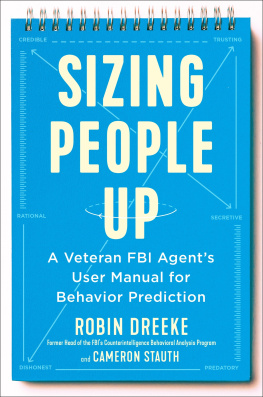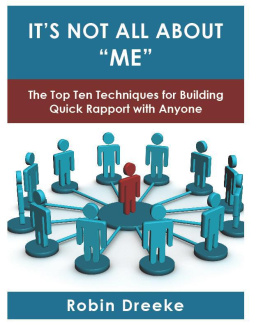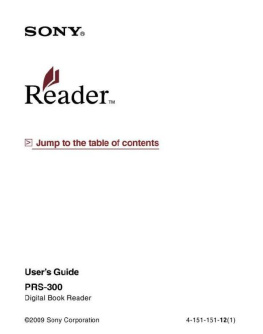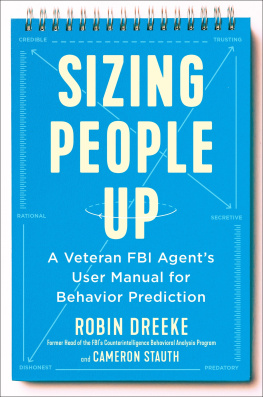Robin Dreeke - Sizing People Up: A Veteran FBI Agents User Manual for Behavior Prediction
Here you can read online Robin Dreeke - Sizing People Up: A Veteran FBI Agents User Manual for Behavior Prediction full text of the book (entire story) in english for free. Download pdf and epub, get meaning, cover and reviews about this ebook. year: 2020, publisher: Penguin Publishing Group, genre: Politics. Description of the work, (preface) as well as reviews are available. Best literature library LitArk.com created for fans of good reading and offers a wide selection of genres:
Romance novel
Science fiction
Adventure
Detective
Science
History
Home and family
Prose
Art
Politics
Computer
Non-fiction
Religion
Business
Children
Humor
Choose a favorite category and find really read worthwhile books. Enjoy immersion in the world of imagination, feel the emotions of the characters or learn something new for yourself, make an fascinating discovery.
- Book:Sizing People Up: A Veteran FBI Agents User Manual for Behavior Prediction
- Author:
- Publisher:Penguin Publishing Group
- Genre:
- Year:2020
- Rating:4 / 5
- Favourites:Add to favourites
- Your mark:
- 80
- 1
- 2
- 3
- 4
- 5
Sizing People Up: A Veteran FBI Agents User Manual for Behavior Prediction: summary, description and annotation
We offer to read an annotation, description, summary or preface (depends on what the author of the book "Sizing People Up: A Veteran FBI Agents User Manual for Behavior Prediction" wrote himself). If you haven't found the necessary information about the book — write in the comments, we will try to find it.
Robin Dreeke: author's other books
Who wrote Sizing People Up: A Veteran FBI Agents User Manual for Behavior Prediction? Find out the surname, the name of the author of the book and a list of all author's works by series.
Sizing People Up: A Veteran FBI Agents User Manual for Behavior Prediction — read online for free the complete book (whole text) full work
Below is the text of the book, divided by pages. System saving the place of the last page read, allows you to conveniently read the book "Sizing People Up: A Veteran FBI Agents User Manual for Behavior Prediction" online for free, without having to search again every time where you left off. Put a bookmark, and you can go to the page where you finished reading at any time.
Font size:
Interval:
Bookmark:
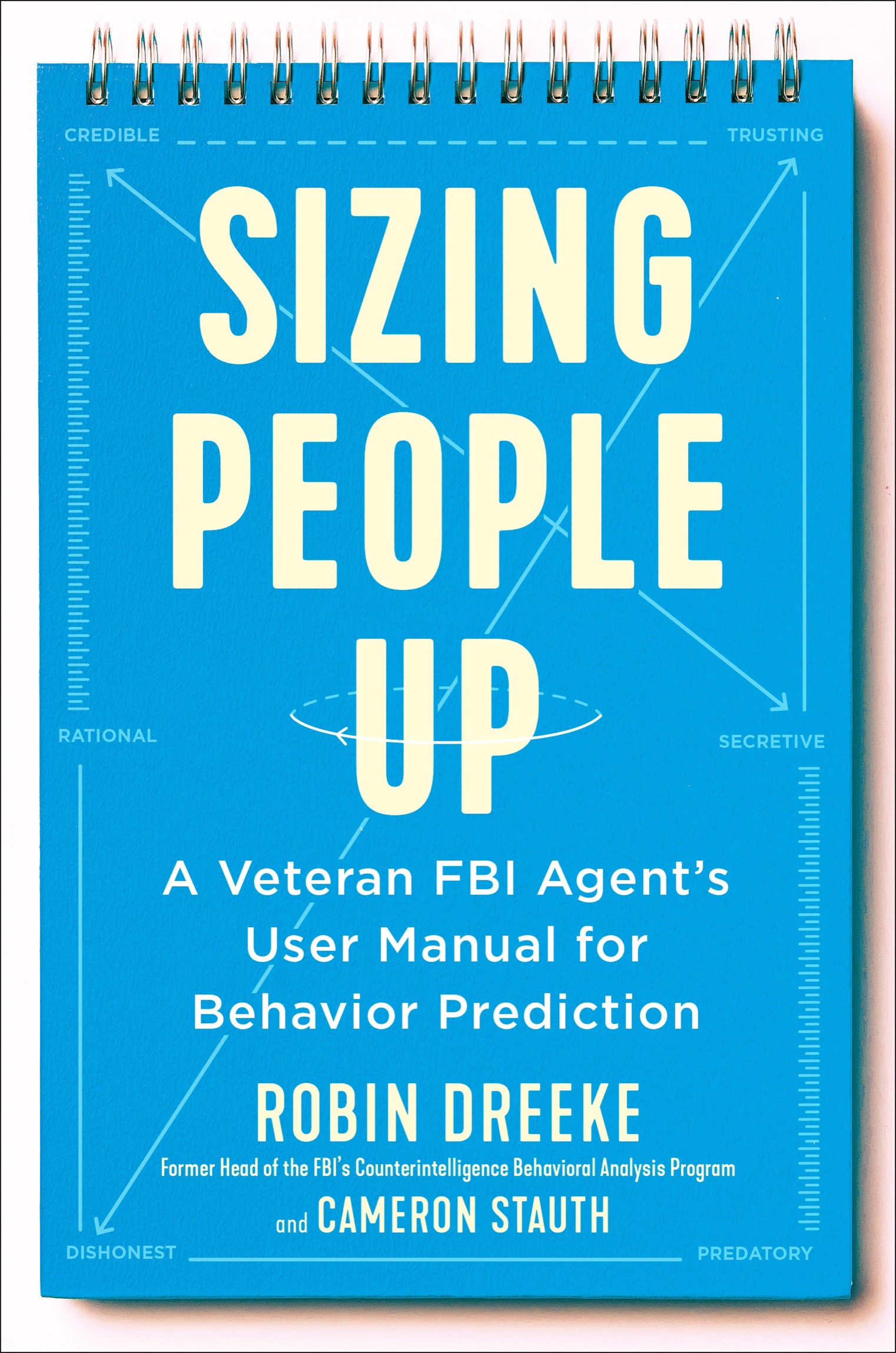


Portfolio/Penguin
An imprint of Penguin Random House LLC
penguinrandomhouse.com

Copyright 2020 by Robin Dreeke
Penguin supports copyright. Copyright fuels creativity, encourages diverse voices, promotes free speech, and creates a vibrant culture. Thank you for buying an authorized edition of this book and for complying with copyright laws by not reproducing, scanning, or distributing any part of it in any form without permission. You are supporting writers and allowing Penguin to continue to publish books for every reader.
Library of Congress Cataloging-in-Publication Data
Names: Dreeke, Robin, author. | Stauth, Cameron, author.
Title: Sizing people up : a veteran FBI agents user manual for behavior prediction / Robin Dreeke and Cameron Stauth.
Description: 1st Edition. | New York : Portfolio, 2020. | Includes index. |
Identifiers: LCCN 2019037863 (print) | LCCN 2019037864 (ebook) | ISBN 9780525540434 (hardcover) | ISBN 9780525540441 (ebook)
Subjects: LCSH: Prediction (Psychology) | Behavioral assessment. | Trust.
Classification: LCC BF761 .D74 2020 (print) | LCC BF761 (ebook) | DDC 155.2/8dc23
LC record available at https://lccn.loc.gov/2019037863
LC ebook record available at https://lccn.loc.gov/2019037864
Penguin is committed to publishing works of quality and integrity. In that spirit, we are proud to offer this book to our readers; however, the story, the experiences, and the words are the authors alone.
Some of the events and anecdotes in the work are factual, such as 9/11 and the Robert Hanssen case, but are derived from open sources and not from FBI investigations or analysis. The stories, cases, and examples used throughout thereafter are based on the career of the author but are fictional, including names and locations. The methodologies of behavioral analysis and the recruitment of human sources are the tools and techniques of the author, and not endorsed, taught, and/or acknowledged by the FBI.
Cover design by Jason Heuer
Version_1
For Our Families
Kim, Katelyn, and Kevin
and
Lori, Gabriel, and Adrienne
FBI New York Field Office
It was a bluebird day, and the last moment of American innocence. Living was easy, money was flowing, democracy was flowering, the Cold War was over, and the United States was luxuriating in a new type of peace on earth: one that feltas hard as it is to comprehend todaylasting.
Each day transitioned into the next so peacefully and predictably that the eras conceit was that wed finally arrived at the end of historyin a good way, believe it or not.
The first shaky baby-steps to the new world order had been taken in 1982, when Ronald Reagan had finally agreed with the Soviet Union to freeze construction of all new nuclear weapons, by invoking the old Russian motto of Doveryai no Proveryai, meaning: Trust, but verify. He meant that hed only trust the Russians if they could prove they deserved it, with facts and figures.
Looking back, it might seem easy to predict that Soviet Russia would soon disband, but at that time their politics were almost completely unpredictable. Americans in both parties thought Reagans deal was doomed. The left believed that trust based on verification wasnt trust at all, and the right thought that there was no such thing as trusting an enemy. They were both wrong. It worked, and Ive never forgotten the lesson.
But that era was about to end. Trust, and the predictability that almost always accompanies it, would be over in a few seconds.
A colleague and I were standing in front of a food cart in the Wall Street district, just outside our towering regional HQ. It was eight forty-five in the morning, but I was ready for my second round of coffee, because Id come to work at five a.m., excited just to be there at such a great time in the long American experiment of trusting only the leaders who act in our own personal best interests: a political philosophy that we call democracy.
I heard a thud.
It looked like a small plane had crashed into the North Tower of the World Trade Center. My colleague said, Poor guy must have had a heart attack.
At least its not terrorism, I said.
We rushed back up to our offices, where almost everyone was standing at the windows, transfixed.
A fire truck from a station below screamed toward the scene, and it felt as if we had front-row seats to an inspiring display of heroism that would carry the country to even greater heights.
But five of the firefighters that I saw in the truck would soon be dead, along with hundreds of others.
Debris started to fall from the tower. But as it fell, I realized with a sick feeling that it was people, because their arms and legs were flailing.
Soon a fireball shot through the South Tower. I yelled, Oh my Godits terrorism! and looked behind me. The room was empty.
Ten agents soon returned, all of them former marines, like me, and somebody said that truck bombs were headed for our building, which was one of the tallest in the neighborhood, and also a federal outpost.
We gotta evacuate! I shouted. I was a relatively new recruit at the New York City field office, in a room filled with senior agents, but this was not the time for concern about overstepping authority.
No! one of the agents cried. If its your time to go, its your time to go!
Id long considered that agent to be remarkably reasonable, but his emotion-driven exhortation was reckless and foolhardy. So I shot it down and helped organize a group that ran to an FBI command post at the base of the towers.
In an act of incredible courage, someone charged toward the towers to help one of the people whod stumbled out of the building, but the rescuer got so close that he was killed by one of the jumpers. People were dodging falling debris and flailing people, but in the smoke and dust most people were invisible or looked like stick figures.
Men and women were risking their lives for strangers, but many peopleunderstandablycowered in fear or just disappeared. Some were dumbstruck, but others operated with the military precision of soldiers in combat.
An agent Id worked with, Lenny Hattonan ex-marine explosives specialist whod worked three prior terrorist attacks, and had just testified in an al-Qaeda trialrecognized the need for a communications network from inside the towers. So he ran into the darkness as everyone else was running out.
It was possible, but unlikely, that Lenny had made contact with my former boss at the FBI, John ONeill, who was on his first day as the head of security at the World Trade Center. John and his team had solved the 1993 bombing of the WTC, and hed spent his last four years at the Bureau working the Osama bin Laden case, trying to convince people that bin Laden was capable of a direct hit on the U.S. At that moment, John was on the forty-ninth floor of the South Tower, commanding the evacuation and refusing to leave.
Font size:
Interval:
Bookmark:
Similar books «Sizing People Up: A Veteran FBI Agents User Manual for Behavior Prediction»
Look at similar books to Sizing People Up: A Veteran FBI Agents User Manual for Behavior Prediction. We have selected literature similar in name and meaning in the hope of providing readers with more options to find new, interesting, not yet read works.
Discussion, reviews of the book Sizing People Up: A Veteran FBI Agents User Manual for Behavior Prediction and just readers' own opinions. Leave your comments, write what you think about the work, its meaning or the main characters. Specify what exactly you liked and what you didn't like, and why you think so.

